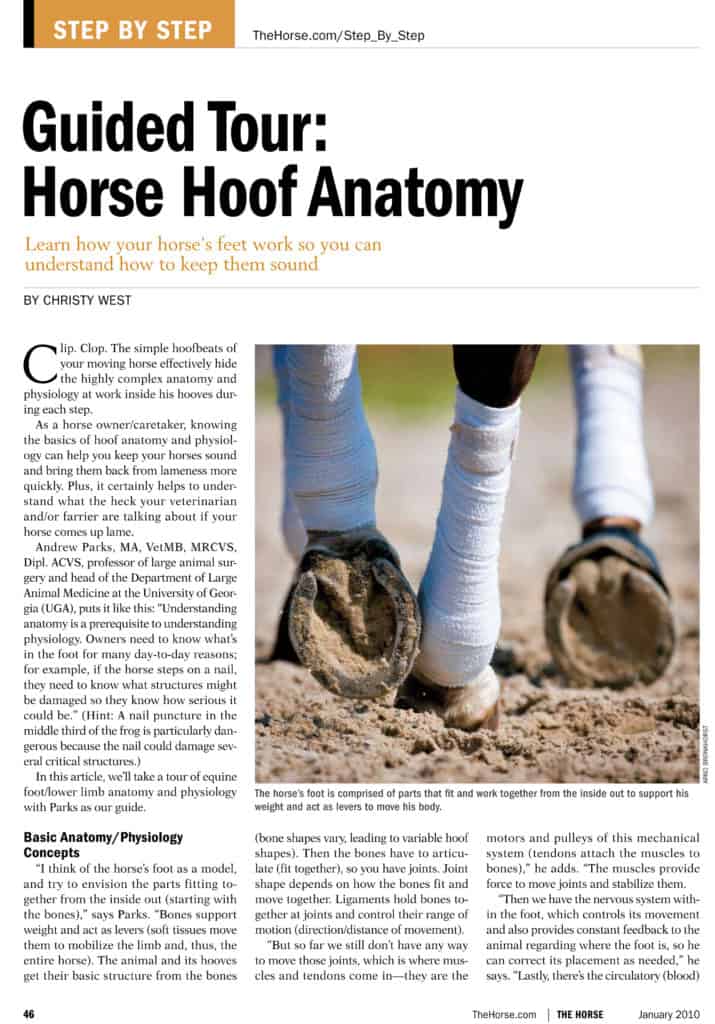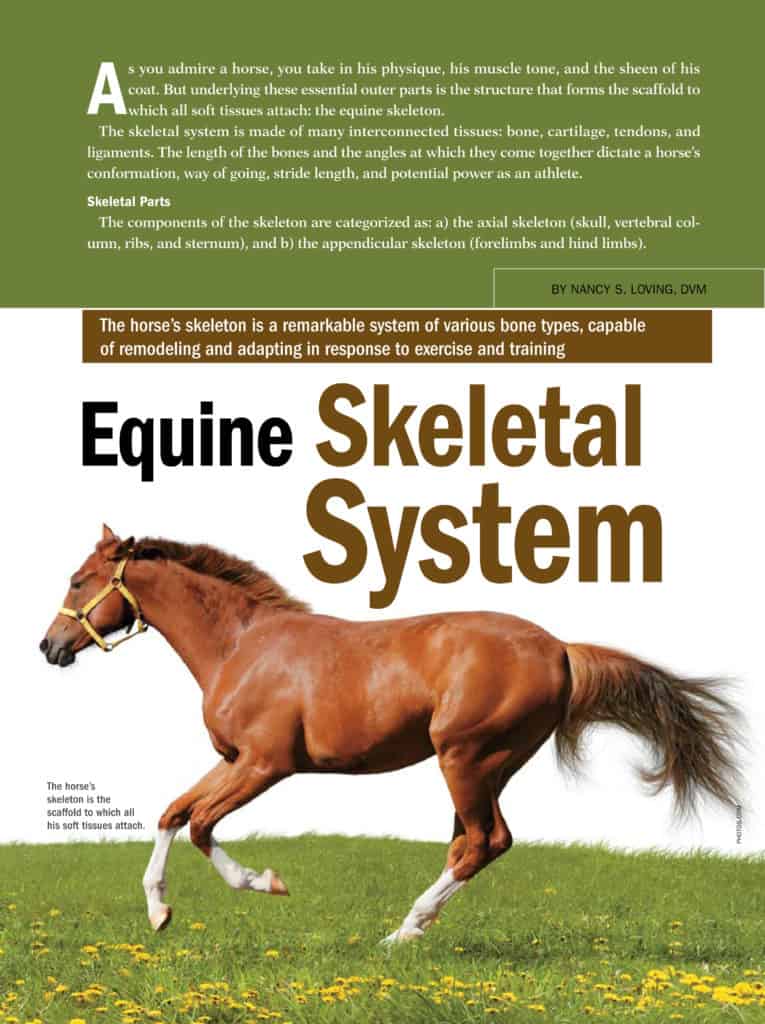
Hoof Supplements
Oral supplements might be indicated for horses with dry, cracked, or brittle hooves.

Oral supplements might be indicated for horses with dry, cracked, or brittle hooves.

The simple hoofbeats of your moving horse effectively hide the highly complex anatomy and physiology at work inside his hooves during each step.

As you admire a horse, you take in his physique, his muscle tone, and the sheen of his coat. But underlying these essential outer parts is the structure that forms the scaffold to which all soft tissues attach: the equine skeleton.

Knowing how the hoof is built and what it is capable of can help you understand what it needs to stay healthy and recover if compromised.
Researchers examined the effects of uneven feet on equine performance and linked this to other faults.
This point/counterpoint discusses the controversial issue of whether horses need to wear shoes. Back in 2002, Tufts University hosted a seminar for farriers and veterinarians to review the barefoot hoof care methods devise
Learn how equine podiatrists assess, treat, and monitor laminitis. Laminitis is a terrifying mystery to many horse owners, in part because in the early stages a horse with tremendous damage can look and act much like a mil
Choice of farrier might have a significant influence not only on the shape of a horse’s hoof, but its soundness and athletic ability, according to research carried out by veterinarians in Switzerland. Forty dressage and show jumping horses, divided

Horse hooves aren’t created equal, which can make it hard to understand the healthy foot’s form and function.
Ask 10 people what a healthy hoof should look like, and you’ll likely get 10 variations of an answer.
“Owners and trainers worldwide have the feeling that every veterinarian and every farrier have years of experience and vast knowledge about laminitis and podiatry (foot care). Unfortunately, this is not the case,” said Ric Redden, DVM, founder of
Several lameness problems can exist in the rear (palmar) half of a horse’s foot; most bear the very general title of “heel pain.” The real problem is that without very careful diagnosis, lameness in this general area might be attributed to the
Shelly, crumbly feet can be a challenge for horses and their owners. The feet break down too readily if the horse is barefoot, and they are unable to hold nails if he’s shod. In this article we’ll look at several causes and potential treatments for
Barbaro’s death might lead one to think that despite the best veterinary care available, horses with severe leg injuries and/or laminitis are unrecoverable and should be immediately destroyed. But one equine veterinarian says that couldn’t be further
The old saying, “No hoof, no horse” is very true, especially as it pertains to the horse’s working ability and soundness. The horse is an athlete; we use him for a variety of athletic purposes — racing, jumping, chasing cattle, pulling carts.
The equine lexicon is filled with clich?s about the equine foot. Most horse owners have heard them all. “No foot, no horse…The foot is the horse’s foundation…For want of a shoe…” The list goes on. Without sound feet, a horse can’t move
Stay on top of the most recent Horse Health news with
"*" indicates required fields